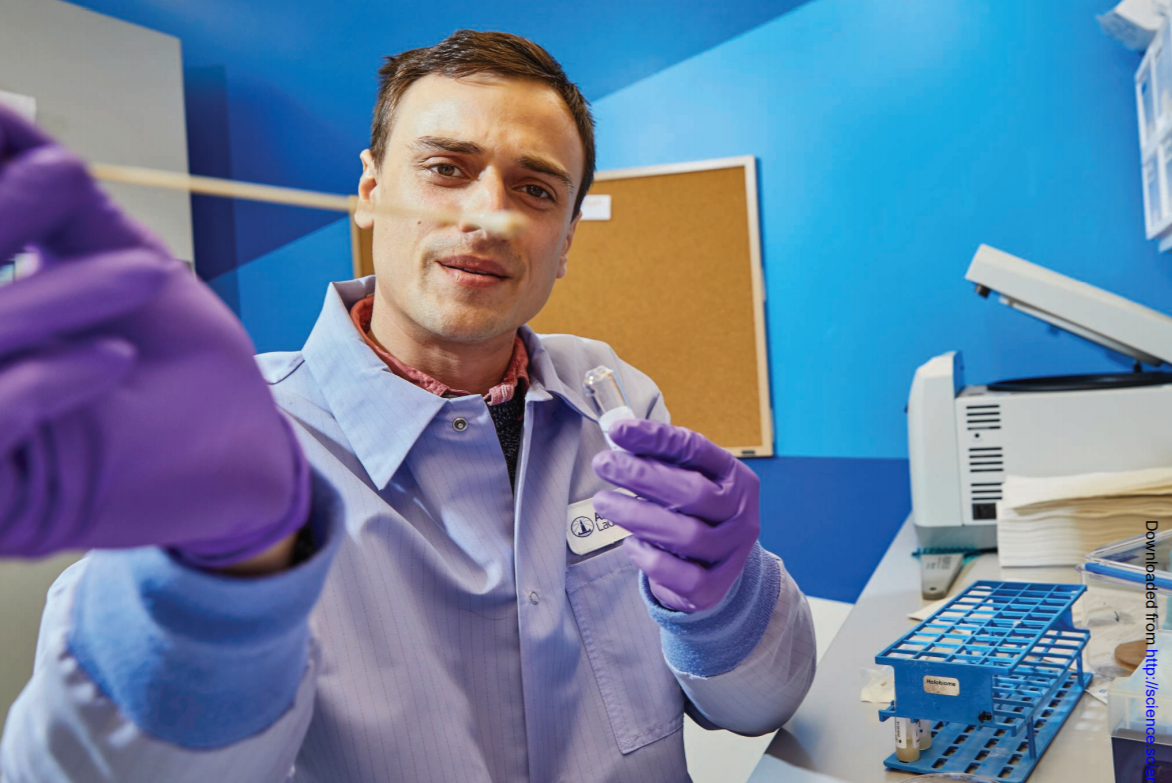每日外闻102

接着上一篇聊:
Skolnick率先获得了Holobiome的quuine(一种仅由某些肠道微生物产生的维生素样分子)的使用的专利,这种分子能改善精神健康。人体利用queuine来建立神经递质,例如多巴胺,5-羟色胺/血清素和褪黑激素。目前还不是特别清楚是加入能产生queuine的微生物还是直接加入queuine能帮助患有精神疾病的人。但Strandwitz说,他对此想法感到很兴奋。
加州大学洛杉矶分校的生物学家Elaine Hsiao说:“看到微生物组肠-脑领域的巨大增长是令人惊讶的。”和Strandwitz一样,她也是一个此领域的狂热者,她帮助创办了两家公司来开发多种疾病的微生物疗法,包括癫痫和自闭症。
其他研究人员担心创业的热情超越了科学本身。Knight说,风险资本家正在资助初创公司开发几乎所有基于微生物组的疗法。他说:有些新的概念确实“非常有前景,而且有大量的证据支撑。”但是有些则不然,而且他们仍在赚钱。Knight表示,投资者在那些急切的病人身上看到了机会(Raes说,他几乎每天都会收到抑郁症患者寻求帮助的电子邮件)。
微生物疗法不一定能达到与药物治疗相同的效果。要作为一种药物销售,这种治疗方式必须通过临床试验,证明其对特定的疾病的有效性,从而获得美国食品和药物管理局(FDA)或其他国家的同类机构的认可。迄今为止,大多数微生物组疗法都以益生菌的形式销售,因为益生菌的监管门槛较低,至少在美国是这样的,而制造商对健康声明的限制也是较低。
这个领域仍然面临着相当多的科学问题。伊利诺伊大学芝加哥分校的系统生殖生物学家Beatriz Peñalver Bernabé说,除了大部分研究的相关性质,以及动物的研究结果是否适用于人类本身的常见问题之外,还有人类微生物群的绝对复杂性。“我不认为这是一件适合所有人的事情。我们需要为不同的人寻找特定的菌株和剂量。”她补充说,还需要新的理论和模型来预测这些菌株将如何影响个体的特定微生物群落。
尽管存在这些障碍,Gavrish仍然相信,她在厌氧室培育的一些菌株将有助于疾病治疗。她说,毕竟肠道微生物和人类大脑之间的联系有着深刻的进化根源。“我真的相信你可以利用一百年来一直存在的肠道细菌的调节信号来帮助人们。”她补充道。

Skolnick took the lead on obtaining a patent for Holobiome’s use of queuine—a vitaminlike molecule only produced by certain gut microbes—to improve mental well-being. The body uses queuine to build neurotransmitters such as dopamine, serotonin, and melatonin. Whether adding queuine producers or the molecule itself to the gut might help people with mental illness isn’t clear, but Strandwitz says he’s excited about the idea.
“It’s been amazing to witness the tremendous growth in the microbiome gut-brain field,” says UC Los Angeles biologist Elaine Hsiao. Like Strandwitz, she is an enthusiast, having helped start two companies to develop microbial therapies for several disorders, including epilepsy and autism.
Other researchers fear entrepreneurship is outracing science. Knight says venture capitalists are funding startups developing almost any microbiome-based therapies. Some concepts are “very promising and are supported by a lot of evidence,” he says, but others aren’t, and they’re still getting money. Knight says investors see an opportunity in eager patients. (Raes says he gets almost daily emails from depressed people seeking help.)
Microbial therapies won’t necessarily meet the same standards of efficacy as regular drugs. To be marketed as a pharmaceutical, a treatment has to pass muster with the U.S. Food and Drug Administration, or its equivalent in other countries, through clinical trials that prove its effectiveness against specific diseases. Most microbiome treatments so far are marketed as probiotics, for which regulatory thresholds are lower, at least in the United States—as are limits on the health claims that a manufacturer can make. Holobiome is developing both types of products.
The field still faces considerable scientific questions, too. Besides the correlative nature of much of the research and the usual questions of whether animal studies will translate to humans, there’s also the sheer complexity of the human microbiome, says Beatriz Peñalver Bernabé, a systems reproductive biologist at the University of Illinois, Chicago. “I don’t think that it will be ‘one thing fits all.’ We will need to look for specific strains and dosages for different people.” And, she adds, new theories and models are needed to predict how those strains will affect the individual’s particular microbiome community.
Despite the obstacles, Gavrish remains confident that some strains she’s growing in the anaerobic chamber will lead to treatments. After all, she says, the connection between gut microbes and the human brain has deep evolutionary roots. “I truly believe you can harness the power of a million years of signaling by gut bacteria to help people.”
See you tomorrow







